第21章 LEAF-CLIMBERS(9)
The flexible petiole of a half or a quarter grown leaf which has clasped an object for three or four days increases much in thickness, and after several weeks becomes so wonderfully hard and rigid that it can hardly be removed from its support.On comparing a thin transverse slice of such a petiole with one from an older leaf growing close beneath, which had not clasped anything, its diameter was found to be fully doubled, and its structure greatly changed.In two other petioles similarly compared, and here represented, the increase in diameter was not quite so great.In the section of the petiole in its ordinary state (A), we see a semilunar band of cellular tissue (not well shown in the woodcut) differing slightly in appearance from that outside it, and including three closely approximate groups of dark vessels.Near the upper surface of the petiole, beneath two exterior ridges, there are two other small circular groups of vessels.In the section of the petiole (B) which had clasped during several weeks a stick, the two exterior ridges have become much less prominent, and the two groups of woody vessels beneath them much increased in diameter.The semilunar band has been converted into a complete ring of very hard, white, woody tissue, with lines radiating from the centre.The three groups of vessels, which, though near together, were before distinct, are now completely blended.The upper part of this ring of woody vessels, formed by the prolongation of the horns of the original semilunar band, is narrower than the lower part, and slightly less compact.This petiole after clasping the stick had actually become thicker than the stem from which it arose; and this was chiefly due to the increased thickness of the ring of wood.This ring presented, both in a transverse and longitudinal section, a closely similar structure to that of the stem.It is a singular morphological fact that the petiole should thus acquire a structure almost identically the same with that of the axis; and it is a still more singular physiological fact that so great a change should have been induced by the mere act of clasping a support.
FUMARIACEAE.--Fumaria officinalis.--It could not have been anticipated that so lowly a plant as this Fumaria should have been a climber.It climbs by the aid of the main and lateral petioles of its compound leaves; and even the much-flattened terminal portion of the petiole can seize a support.I have seen a substance as soft as a withered blade of grass caught.Petioles which have clasped any object ultimately become rather thicker and more cylindrical.On lightly rubbing several petioles with a twig, they became perceptibly curved in 1 hr.15 m., and subsequently straightened themselves.Astick gently placed in the angle between two sub-petioles excited them to move, and was almost clasped in 9 hrs.A loop of thread, weighing one-eighth of a grain, caused, after 12 hrs.and before 20hrs, had elapsed, a considerable curvature; but it was never fairly clasped by the petiole.The young internodes are in continual movement, which is considerable in extent, but very irregular; a zigzag line, or a spire crossing itself; or a figure of 8 being formed.The course during 12 hrs., when traced on a bell-glass, apparently represented about four ellipses.The leaves themselves likewise move spontaneously, the main petioles curving themselves in accordance with the movements of the internodes; so that when the latter moved to one side, the petioles moved to the same side, then, becoming straight, reversed their curvature.The petioles, however, do not move over a wide space, as could be seen when a shoot was securely tied to a stick.The leaf in this case followed an irregular course, like that made by the internodes.
Adlumia cirrhosa.--I raised some plants late in the summer; they formed very fine leaves, but threw up no central stem.The first-formed leaves were not sensitive; some of the later ones were so, but only towards their extremities, which were thus enabled to clasp sticks.This could be of no service to the plant, as these leaves rose from the ground; but it showed what the future character of the plant would have been, had it grown tall enough to climb.The tip of one of these basal leaves, whilst young, described in 1 hr.36 m.a narrow ellipse, open at one end, and exactly three inches in length;a second ellipse was broader, more irregular, and shorter, viz., only 2.5 inches in length, and was completed in 2 hrs.2 m.From the analogy of Fumaria and Corydalis, I have no doubt that the internodes of Adlumia have the power of revolving.
Corydalis claviculata.--This plant is interesting from being in a condition so exactly intermediate between a leaf-climber and a tendril-bearer, that it might have been described under either head;but, for reasons hereafter assigned, it has been classed amongst tendril-bearers.
Besides the plants already described, Bignonia unguis and its close allies, though aided by tendrils, have clasping petioles.According to Mohl (p.40), Cocculus Japonicus (one of the Menispermaceae) and a fern, the Ophioglossum Japonicum (p.39), climb by their leaf-stalks.
We now come to a small section of plants which climb by means of the produced midribs or tips of their leaves.
LILIACEAE.--Gloriosa Plantii.--The stem of a half-grown plant continually moved, generally describing an irregular spire, but sometimes oval figures with the longer axes directed in different lines.It either followed the sun, or moved in an opposite course, and sometimes stood still before reversing its direction.One oval was completed in 3 hrs.40 m.; of two horseshoe-shaped figures, one was completed in 4 hrs.35 m.and the other in 3 hrs.The shoots, in their movements, reached points between four and five inches asunder.